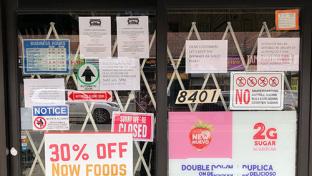Ecomm Grocers Must Bridge Content-Commerce Gap
As it is in the world of media, content is king for grocers playing in the ecommerce space today. The intelligence, insights and interactivity that grocers provide shoppers through imagery, videos, recipes, chatbots and more are, in many ways, as valuable to them as the products they end up purchasing.
The problem is that all too often, grocers today run separate sites for their recipes and online ordering. This creates a disconnect between content and commerce – and ultimately shoppers and the products they want – along with an opportunity to build a bridge here.
As of late, shoppable recipes – where all ingredients in an online recipe can be ordered through an ecommerce service with the click of a button – have been growing in popularity, especially in an age where pure-play meal-kit providers are having a rough go, grappling with high costs that come from marketing, lots of packaging, pre-portioning ingredients, and the like. Some 71 percent of users wish that meal kits were less expensive, and 72 percent of nonusers would give kits a try if they were so, according to recent research from Field Agent.
It’s not too difficult to see why shoppable recipes are creating a suitable option: A number of the expenses mentioned above are cut into the process, making the deal (hopefully) more cost-feasible. But they also bridge the two things shoppers need to make informed grocery purchase decisions: content and commerce.
In mid-November alone, Amazon inked deals with personalized nutrition platform and meal-planning service EatLove and media and marketing company Meredith Corp. – the latter of which owns AllRecipes.com – to add one-click ordering of ingredients to recipes on the brands’ recipe sites. Customers choose the recipe (content) they want to prepare and, with the click of a button, order all of the ingredients they need for delivery via the Amazon Fresh service (commerce). A similar service, eMeals, allows for one-click ordering and delivery through Amazon Fresh and Instacart.
And as of today, shoppable recipe orders are no longer limited to ingredients: Walmart announced that Tasty, a social food network from Internet media company Buzzfeed that’s said to be the world’s largest of its kind, now allows for one-click ordering via Walmart.com and Jet.com of the kitchen tools, bakeware and appliances needed to prepare any of the 2,000-plus recipes showcased in the service’s mobile app. Beginning in 2018, groceries will be integrated, too.
This is a natural fit: Tasty attracts more than 65 billion video views and is the biggest franchise on Facebook (90 million-plus followers); Walmart operates 4,700 stores and offers more than 70 million products online; and Jet.com is a “go-to destination for a premium assortment of brands” and “appeals to Tasty’s urban Millennial audience,” as Walmart noted.
As time goes on, one may well speculate whether, through Amazon Key’s in-home delivery service, Prime members might have the ability to click a button on a recipe and hire one of the services offered – currently more than 1,200 – to actually cook a meal in-house while they are commuting home from work, running an errand or picking up the kids. This scenario might not be such a long shot for those who might be strapped for time but want to enjoy a meal at home with family – and who've got the cash to pay for it.
Whatever the future holds, we know this: The future of grocery ecommerce belongs to those who provide great content and to those with solid ecommerce platforms. The question is, when both are ready, how will you integrate them to be the full-fledged solutions consultant and provider that your time-starved, inspiration-seeking followers ultimately need?





